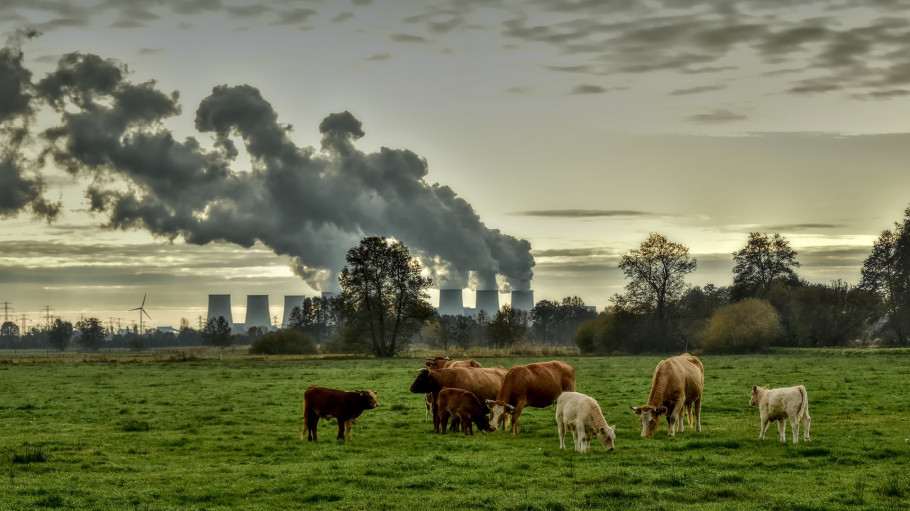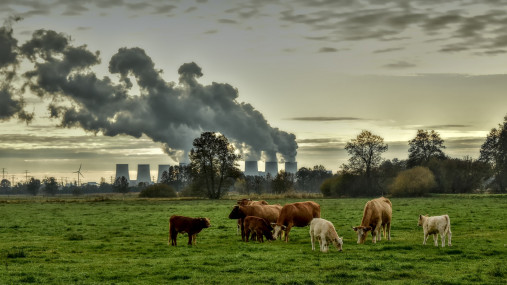
Publications » Position papers » Commission proposal on the revision of the Industrial Emissions Directive
Commission proposal on the revision of the Industrial Emissions Directive
Downloads and links
Recent updates

EUROFER members are firmly committed to significantly invest in the transition towards a clean, low-carbon future, in line with the Green Deal objectives. To this end, there is one investment cycle left to make the right decisions while keeping the EU steel industry competitive.
The transition of industry, and in particular the steel sector, will take place in stages: new plants will be built, new processes will be introduced and existing plants will continue to operate until the new plants/processes can replace them completely. An innovation-friendly environment with legal and planning certainty is necessary for the economic activities and the preservation of the competitiveness of the steel industry.
The existing IED has been a very effective tool for reducing industrial emissions and recent BREF reviews show that it is fit-for-purpose for addressing existing and future environmental challenges. For the industries to carry on with their transition, a consistent (respect the integrated approach), efficient (by accelerating permit procedures without unnecessary burden) and legally secure permit process is key.
However, it seems that IED review (IED 2.0) will lose its spirit and the BAT process will get a very new and not desired meaning. The Commission proposal makes us extremely concerned and, if no deletions or significantly amended, it will have the opposite effect. This paper concludes on the most important parts and EUROFER has elaborated plenty of proposals for the revised IED so it remains efficient whilst supporting innovation.
EUROFER key messages and requests
- Safeguarding the integrated approach to pollution prevention and control: the assessment of the well performing plants applying BAT(s) shows that availability of techniques is not given and that no installation in Europe can comply with the lowest end of range of all BAT- AELs defined in all the steel related BREFs as proposed by default in Art 15.3.
- BAT-AEPLs (raw material, water and energy) should remain non-binding to avoid hindering innovation as well as efficiency measures, but also ambitions for circularity. Therefore Art 15.3a should be deleted and Art 9.2 on energy efficiency measures maintained.
- IED 2.0 supports decarbonisation but need specific provisions for sectors under deep transformation like steel in an effective manner preventing large investments on existing assets that are planned to be phased, since the transformation would already be extremely capital intensive. Lately, the Seville process also contributes with the identification of de-C techniques and therefore, the Commission’s proposal to maintain Art 9.1 is supported.
- Accompany the transformation, not overloading neither micromanaging it:
- The EMS is already included in legally binding BAT conclusions (BREFs). The proposed Article 14a on EMS should be deleted.
- Emerging and innovative techniques are not at a level of maturity which allows a thorough data collection and establishment of the corresponding AELs – one of the underlying principles to develop BREFs/BAT conclusions. The revised IED should provide operators with sufficient time and a clear and solid legal framework to demonstrate that the expected performance of Emerging Techniques and the associated emission levels (ET-AELs) can be achieved in operational installations as well as legal certainty on what would happen should the expected levels not be achieved. Art. 27 c must be amended.
- Transformation Plans (TPs) should remain indicative: they should not be part of the permitting process nor have a binding character as these will be based on a number of parameters and key factors that are beyond the control of plant operators. We therefore ask that provisions (Article 27d) on TPs are deleted.
- Providing legal certainty to operators: BREF/BAT produced under the current IED must be regulated under the existing regime and not under IED 2.0, as BAT-AE(P)Ls have been produced considering the existing BREF guidance. An amended transposition article is needed.
- The publication of permits and company data must guarantee the protection of sensitive data against the background of competition rules (Article 13(b)2).
- In relation to Environmental Quality standards (EQS), competent authorities are invited to apply the principle of proportionality and adopt measures that will ensure that other sources will also reduce their specific contribution to the observed exceedance (Art 18).
- Exclude sectors of lower environmental relevance: the inclusion of cold rolling mills, wire drawing, smitheries with forging presses and small hammer smitheries mills (Annex I 2.3) is rejected.
The full text of the position paper on the revision of the Industrial Emissions Directive is available below.

Download this publication or visit associated links
Brussels, 27 November 2024 – The European steel industry is at a critical juncture, facing irreversible decline unless the EU and Member States take immediate action to secure its future and green transition. Despite repeated warnings from the sector, the EU leadership and governments have yet to implement decisive measures to preserve manufacturing and allow green investments across Europe. Recent massive production cuts and closure announcements by European steelmakers show that time has run out. A robust European Steel Action Plan under an EU Clean Industrial Deal cannot wait or manufacturing value chains across Europe will simply vanish, warns the European Steel Association.
Brussels, 12 November 2024 - Ahead of Commissioner-Designate Séjourné’s hearing in the European Parliament, European steel social partners, supported by cross-party MEPs, jointly call for an EU Steel Action Plan to restore steel’s competitiveness, and save its green transition as well as steelworkers’ jobs across Europe.
Brussels, 29 October 2024 – The European steel market faces an increasingly challenging outlook, driven by a combination of low steel demand, a downturn in steel-using sectors, and persistently high import shares. These factors, combined with a weak overall economic forecast, rising geopolitical tensions, and higher energy costs for the EU compared to other major economic regions, are further deepening the downward trend observed in recent quarters. According to EUROFER’s latest Economic and Steel Market Outlook, apparent steel consumption will not recover in 2024 as previously projected (+1.4%) but is instead expected to experience another recession (-1.8%), although milder than in 2023 (-6%). Similarly, the outlook for steel-using sectors’ output has worsened for 2024 (-2.7%, down from -1.6%). Recovery projections for 2025 are also more modest for both apparent consumption (+3.8%) and steel-using sectors’ output (+1.6%). Steel imports share rose to 28% in the second quarter of 2024.